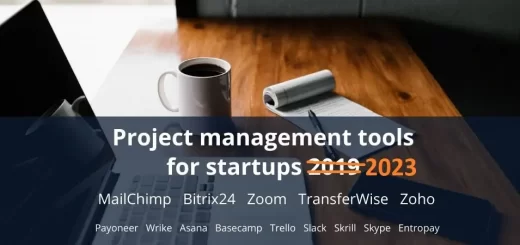How to Grow Website Traffic at a Start-Up

When you’re first starting out, you only have limited resources at your disposal. Whether your start-up deals with e-commerce, software or online services, your main priority is to develop the best possible product for your clients. But many start-ups obsess over the product without acknowledging the pressing need to sell it.
That’s why, digital marketing, the cornerstone of client acquisition, often falls by the wayside. You need to realize that no one will buy your product if they don’t know you exist. You need traffic and lots of it to make yourself known in the marketplace. Otherwise, your next-big-thing venture will end up in the vast entrepreneurial necropolis, contributing to the 90 percent start-up failure rate.
Here, I share some of the best tips about how to start getting regular organic traffic and how to design an optimal content production process (even with limited resources).
Establish Specific Content Marketing Goals
Setting traffic goals keeps you and your team motivated. But remember that Google and other search engines will put you through the so-called “sandbox period.” For about six months, your freshly developed website will endure tests for trust and content quality. Only after that will you see significant spikes in traffic.
That’s why, when setting your goals, you shouldn’t become overly optimistic. It’s a long-term game (12–24 months to see significant results with a fresh website or 3–6 months if you’re web entity is already well-established).
Your goals will also depend on the niche in which you operate. Sometimes, there’s only so much traffic potential to exploit.
Think like a poker pro
To succeed in the content marketing and traffic game, you’ll need heaps of self-discipline, patience and good analytical abilities. It’s good to think about yourself as a player because getting traffic is, in fact, a game with some cool stats. Incidentally, you will need the same essential success skills often displayed by the pros at poker tables. But here, instead of raking in the poker chips, you’ll develop content assets that will accumulate over time and establish your traffic empire.
Keep weekly and monthly tabs on:
- The number of accomplished goals as defined in Google Analytics (this can be an event like landing on your “thank you page”)
- The number of email signups
- Unique viewer count
- The number of sessions (this one is important if you plan on using display advertising, e.g. Google Adwords)
- Bounce rate
- Average time spent on page
Create a Google Sheet with these stats and share it with your team so that everyone is on the same page. It’s not unreasonable to expect 30,000 monthly viewers within 12 months if you’re serious about regular content publishing, which brings us to the next step.
The saying “content is king” still holds true

Image by Tumisu from Pixabay
Get the Right Copywriting and Content Development Skills in Place
This one is critical if you expect regular organic traffic. First, visit all your competitors’ websites and measure the quality of their content. Remember that you always have to aim for higher quality, even if it means publishing less frequently.
Set standards for your content in length, number of images, visual identity and the other multimedia you plan to develop (video or audio content is always essential). Publish the said standards in a document you will call your “Editorial Style Guidebook.” Everyone in your small editorial department should know the content rules inside out.
Write your story with organic traffic in mind
With regular high-quality blog posts, you will create positive expectations on the side of your readers, which will lead to more trust and retention.
A couple of best practices for traffic-gaining content creation:
- Articles 1,500–2,000 words in length
- Enticing images every 300 words or so
- Including video content embedded from YouTube to maximize the time spent on-site
- Using a hierarchical headline and sub-headline structure (H1, H2, H3) — use keywords in these elements
- Using on-site SEO best practices (interlinking, alt tags, meta tags, URL structure, keywords use, related tangential keywords)
- Short paragraphs and lots of white space
- Unique content with impactful stats and information
Set a benchmark and then try to raise it every single time you produce a new article. Next comes the real secret to getting lots of high-quality traffic fast.
Start with Low Hanging Fruit – Target Low-Competition Keywords with Decent Traffic Potential
For this, it would be best to use an online analysis tool like SEMRush or Ahrefs. These tools are rather expensive ($99–$299 per month), but you can sign up for a single month, crunch the numbers and discontinue your subscription. It’s still worth the money.
When starting out, it’s hard to compete for the top “big keywords” with a difficulty of 30 and above. Your domain has no authority or backlinks, so at first, it’s best to focus on low-hanging fruit that’s can still bring a lot of conversions.
Here are the keyword characteristics you want:
- Monthly search volume 10–500
- Underserved keywords (low-quality competitive content)
- Keywords with high CPC (cost per click — this means the traffic from these keywords is more valuable)
- Keywords at the bottom of the marketing funnel (as close to making a buying decision as possible)
These tips should give your traffic a good boost, but there are also other things that go beyond the scope of this article. These include developing your content calendar and sticking to it, outsourcing all the repetitive tasks below your pay grade as well as concentrating traffic that’s most likely to convert. But most importantly, as your skills grow, and you get your first results, remember to establish specific projects around pumping out content. That will help you succeed more than anything else.













